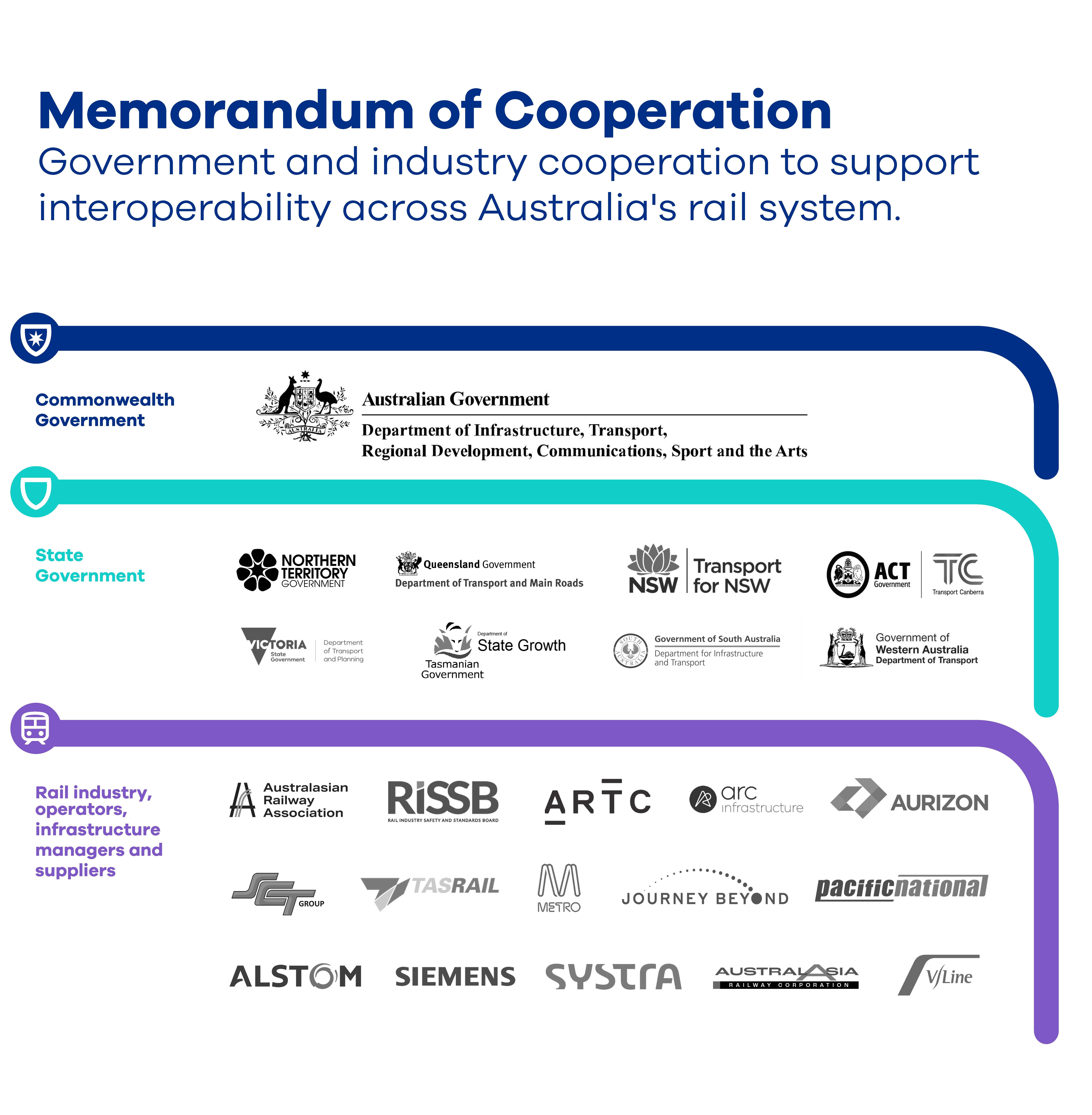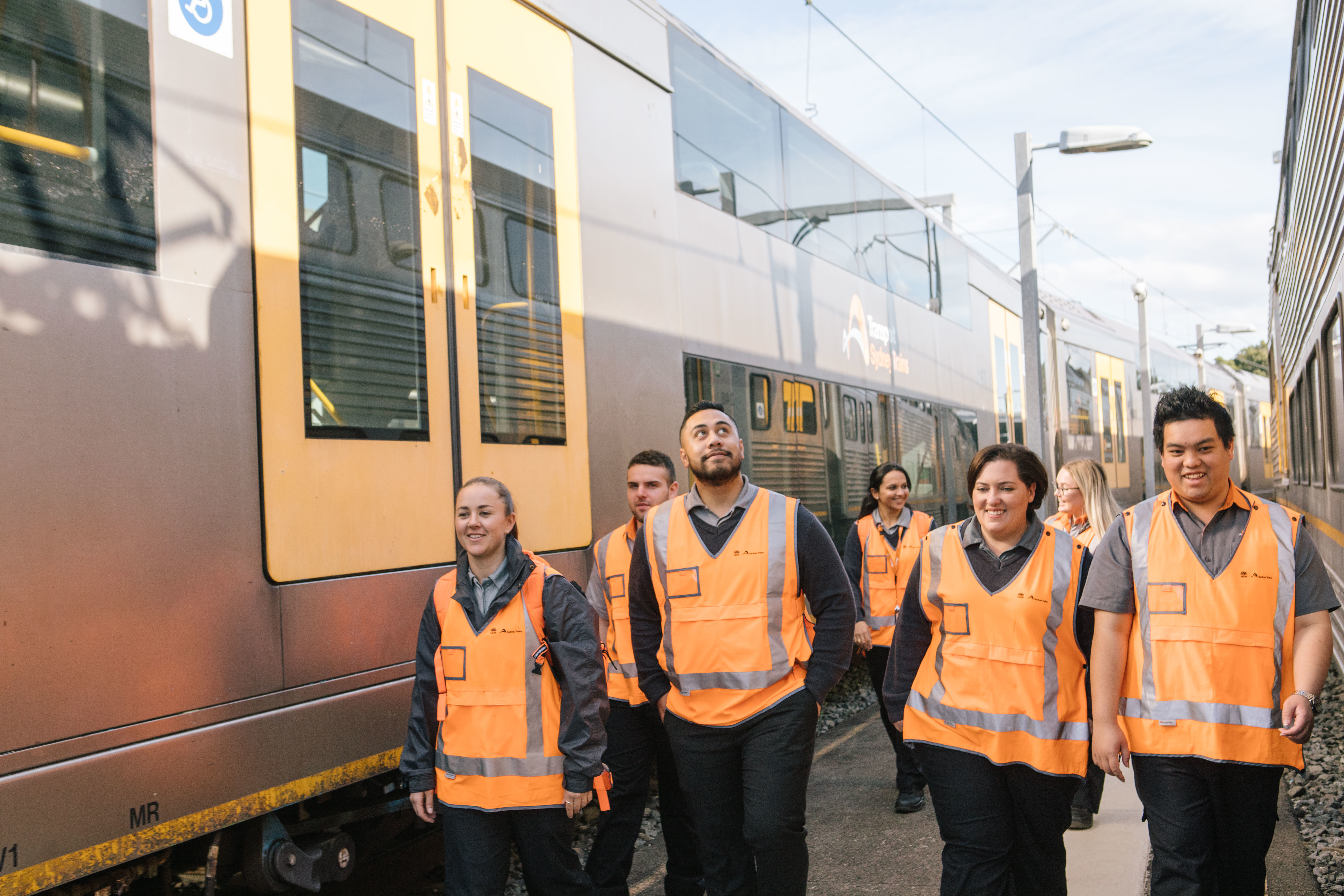Latest news
We’re calling on technical experts to help draft Australia’s first two mandatory rail standards to support the rollout of European Train Control System (ETCS) technology across the National Network for Interoperability (NNI).
This includes a standard setting out the trackside/infrastructure requirements to ensure ETCS compatibility across the NNI. And a standard specifying the requirements for on-board train fitment to ensure ETCS compatibility.
The scope for the standards was informed by a discussion paper. You can find a copy of the feedback report here.
Tender documents to help draft these historic standards are here.
Deadline for submissions: 5pm, 3 December 2025, with final questions to be received by 5pm, 10 November 2025.
To stay updated to all NRAP news, subscribe to our monthly newsletters here.
Lifting productivity through rail reform - A National Cabinet priority
Australia’s transport ministers, through National Cabinet, have made rail interoperability one of eight national priorities to help build a more productive economy.
Through NRAP we are:
- Supporting a new national approach for rail in Australia
- Aligning digital technology that is interoperable across networks
- Getting consistent ways of working and more productive harmonised operations
- Growing a future ready rail workforce with nationally recognised skills
The program includes the first mandatory rail standards to drive interoperability, national standards to improve harmonisation across the industry, as well as new governance arrangements to guide their development and adoption.
We’re also working with governments and industry to embed interoperability into the Rail Safety National Law - ensuring the reforms we make today will shape a safer and more seamless rail system for the future.
Making rail simpler, safer, better
NRAP is taking a national approach to rail in Australia.
Currently, our national rail systems is made up of 18 separate networks — each with its own rules, standards and technologies. For decades, networks have made independent decisions about technology, operations and training, often without considering the impact on neighbouring networks.
Without a national rail system, it costs more to run trains, upgrade networks, makes it harder to train and attract skilled workers, and limits the safety and productivity benefits of new investments.
By reducing differences and improving consistency across networks, we can achieve:
- more trains running without the need for new tracks
- more reliable passenger services
- a stronger, more competitive freight sector to support local industries and major exports.
National Network for Interoperability
To identify where interoperability matters most, we've developed the National Network for Interoperability (NNI).
The NNI defines the major interstate freight and passenger lines that connect Australia’s ports, regions and cities — along with the critical interfaces between them. Achieving interoperability on these corridors is key to improving safety, reducing costs and supporting a more productive national economy.
The NNI brings together eight individual rail networks. By taking a national approach, we’re starting to treat these as one connected system. An interactive map is now live and will be updated as networks expand and evolve.
As a first step, rail transport operators on the network are required to consider national interoperability impacts before making changes to their network.
If interoperability matters are identified, an Interoperability Management Plan will be required.
Further reforms are being progressed to embed stronger interoperability requirements in the Rail Safety National Law.
Rail's digital transformation
Australia’s rail networks are in transition from manual signalling to digital train control systems. These systems make rail operations safer, more reliable and more efficient, while cutting fuel and maintenance costs.
Following a recent decision by Australia’s transport ministers, all future investment in digital train control systems on the National Network for Interoperability (NNI) must comply with European Train Control System (ETCS) national standards. This ensures new train control systems can connect seamlessly across networks — unlocking safety, productivity and environmental benefits for all Australians.
ETCS is a proven global technology used in many advanced rail systems around the world. Aligning with international standards means Australia can draw on global expertise and an established global supply chain.
Interoperable digital systems also make it possible to share data across networks, optimise maintenance and scheduling, and support the development of new technologies to help decarbonise rail on the path to net zero emissions.
Momentum for more connected rail
There is strong national support across governments and industry for reforms that make rail safer, more efficient and more connected.
Rail infrastructure managers, operators, suppliers, the Australasian Railway Association (ARA) and all Australian governments have signed a Memorandum of Cooperation (MoC) to support national rail interoperability.
By signing the MoC, signatories have agreed to consider interoperability in all future rail investments and decisions — ensuring new projects work together as part of one national rail system.

Get involved
If you'd like to find out more about rail reform and the National Rail Action Plan send us an email or subscribe to our monthly newsletter here.
To make a formal submission in response to our discussion papers you can find out more here.
